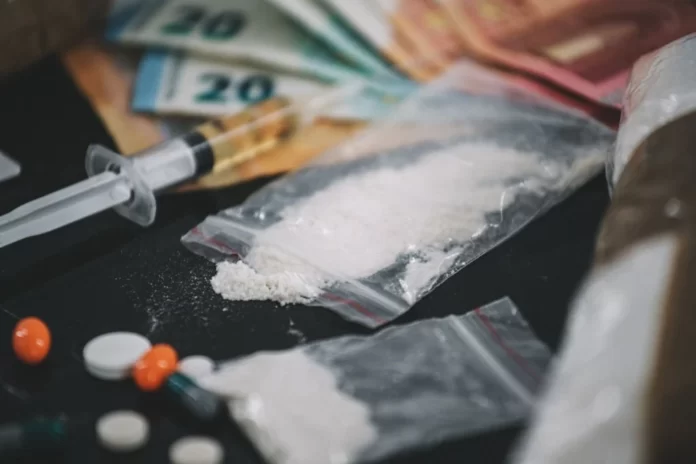Curious about the appearance of methamphetamine? In this informative guide, we’ll delve into the key characteristics that define what does meth look like. Unveiling the stark reality – meth’s visual identity is characterized by crystal clarity, often manifesting as translucent shards or a distinctive blueish hue.
Methamphetamine or meth is a highly addictive stimulant drug that affects the central nervous system. It can cause euphoria increased energy, alertness and paranoia. Meth can also have serious health consequences such as brain damage, heart problems, psychosis, and death.
Meth comes in different forms, colors and textures. It can be smoked, snorted, injected or swallowed. Knowing what meth looks like can help you identify it and avoid its dangers. Here are some common characteristics of meth and how to recognize them.
Crystal Meth
Crystal meth is the most common form of meth. It looks like clear or bluish-white crystals or shards of glass. It is usually smoked in a pipe or a bong. Crystal meth can also be crushed and snorted or dissolved and injected.
Powder Meth
Powder meth is a white or off-white powder that can be snorted, swallowed or mixed with water and injected. It is less pure than crystal meth and may contain other substances, such as caffeine, sugar or talcum powder. Powder meth can also be pressed into pills or capsules.
Liquid Meth
Liquid meth is a clear or yellowish liquid that can be injected, swallowed or applied to the skin. It is usually stored in plastic bottles, syringes or eyedroppers. Liquid meth is very potent and dangerous. It can cause severe burns, infections or overdoses.
Colored Meth
Colored meth is meth that has been dyed with food coloring or other substances to make it look more appealing or to disguise its origin. It can be any color such as pink, green, blue or purple. It can also have different shapes or patterns such as stars, hearts, or skulls. Colored meth can be smoked, snorted, injected or swallowed.
What does meth taste like?
The Bitter Taste of Meth
It may also smell like ammonia, rotten eggs, burnt plastic or other inorganic compounds, similar to how meth smells1. Meth is notorious for its terrible taste so some individuals avoid eating it or consuming it by mouth.
However, some people may swallow meth in the form of a pill, capsule or tablet. Meth can also be snorted as a powder, injected as a liquid or smoked as rocks3. The taste of meth may vary depending on the purity, additives and form of the drug
Identifying Meth by Taste
It is not recommended that you identify meth by taste as it involves a significant risk. Meth can be found in various forms including a crystalline substance, powder or as part of other drugs. Consuming or tasting meth to identify it can be extremely dangerous and may lead to immediate health risks.
Why You Should Avoid Meth?
Methamphetamine commonly known as meth is a potent and highly addictive stimulant that has devastating effects on both physical and mental health. It is imperative to understand the numerous reasons why individuals should avoid using meth as it can have profound and life-altering consequences.
Physical Health Deterioration:
Tooth Decay and Gum Disease:
Meth is notorious for causing severe dental problems, commonly referred to as “meth mouth.” The drug dries out saliva, leading to reduced protection against harmful bacteria resulting in rapid tooth decay and gum disease.
Skin Sores and Infections:
Meth users often develop open sores due to constant scratching or picking at the skin. These sores are susceptible to infections which can lead to more serious health issues.
Weight Loss and Malnutrition:
Meth suppresses appetite, leading to significant weight loss and malnutrition. Users may become emaciated and suffer from deficiencies in essential nutrients.
Mental Health Decline:
Insomnia and Anxiety:
Meth disrupts the body’s natural sleep patterns, causing insomnia and extreme anxiety. This can lead to exhaustion and paranoia, further exacerbating mental health issues.
Depression and Suicidal Thoughts:
Meth use often results in severe depressive episodes and an increased risk of suicidal thoughts. The drug’s effects on brain chemistry can contribute to long-lasting mood disturbances.
Hallucinations and Delusions:
Chronic meth use can lead to hallucinations and delusions, making it difficult for individuals to differentiate between reality and their drug-induced perceptions.
Behavioral and Social Consequences:
Aggression and Violence: Meth can lead to heightened aggression and violent outbursts, putting users and those around them at risk.
Social Isolation: As meth use progresses, individuals often isolate themselves from friends and family, which can lead to a breakdown of important social relationships.
Cognitive Impairment:
Memory Loss and Cognitive Impairment: Prolonged meth use can result in memory loss and significant cognitive impairment. Users may struggle with tasks requiring focus, attention and problem-solving skills.
Serious Medical Emergencies:
Stroke and Seizures: Methamphetamine use is associated with an increased risk of stroke and seizures. These can have life-altering consequences or be fatal.
Heart Attack and Cardiac Arrest: Meth places enormous stress on the cardiovascular system increasing the risk of heart attacks and cardiac arrest even in young individuals with no prior heart issues.
Conclusion
In conclusion, understanding the appearance of meth is vital for awareness and prevention. Stay informed and vigilant for a safer community.

